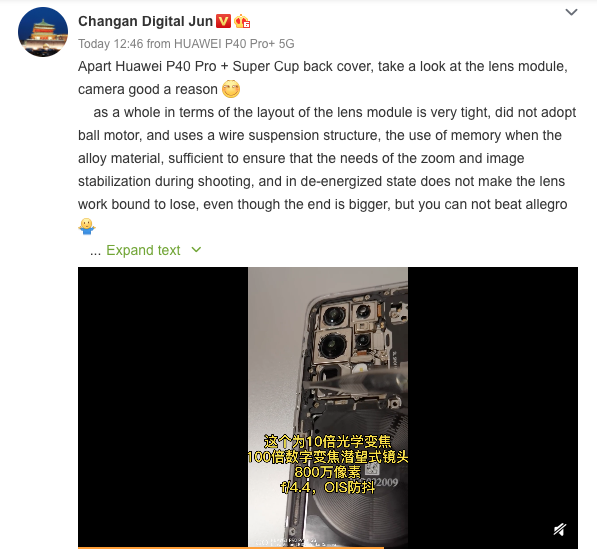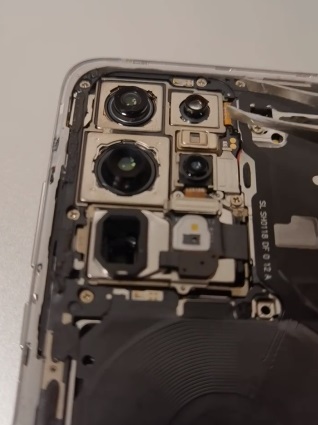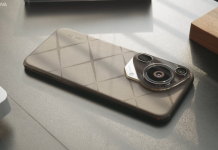Huawei launched the P40 flagship series smartphones in China in March this year and started selling the top-end variant in the lineup — Huawei P40 Pro+ earlier this month which comes with a penta-camera setup.
Now, a user has disassembled the back panel of the Huawei P40 Pro+ smartphone, showcasing the camera module. The video of the same, shared on Weibo, shows that almost a quarter part of the device is covered by the camera system.

It shows that the five-camera setup on the smartphone has a compact layout without any ball motor. It also has a suspended wire structure design which is composed of memory alloy. Thanks to this design, it guarantees zoom and anti-shake features along with the stability of the lens.
The smartphone features a 40MP f/1.8 Ultra Wide Cine Lens, an upgraded 50MP RYYB f/1.9 sensor with OIS, an 8MP f/2.4 Optical Super Periscope Telephoto camera, an 8MP f/2.4 Optical Periscope camera with OIS, and ToF depth sensor.
It is capable of capturing 10x optical zoom, 20x Hybrid zoom, and up to 100x digital zoom. On the front side, the device is equipped with a dual 32MP selfie shooter and an IR depth sensor, capable of capturing 4K selfie videos.

EDITOR’S PICK: Alleged Redmi K40 with 33W fast charging support appears through 3C certification
As for the other specifications, the phone features a 6.58-inch 19.8:9 aspect ratio display with 2640 x 1200 pixels screen resolution, 441 PPI pixel density, and a 90Hz refresh rate. Under the hood, the device is powered by the flagship Huawei HiSilicon Kirin 990 5G processor, coupled with 8GB of RAM.
The device comes with Wi-Fi 6 Plus support with transfer speeds up to 2600Mbps. It runs the latest EMUI 10.1 user interface out-of-the-box, based on Android 10 operating system and comes with the company’s own Huawei Mobile Services (HMS) and its own AppGallery App Store as a replacement of Google services.
The Huawei P40 Pro+ is powered by a decent 4,200mAh battery and comes with support for 40W fast charging technology. It also comes with the world’s fastest 40W wireless charging support as well as reverse wireless charging.
UP NEXT: HMD Global teases new Nokia 5G smartphone powered by Snapdragon 690 SoC






